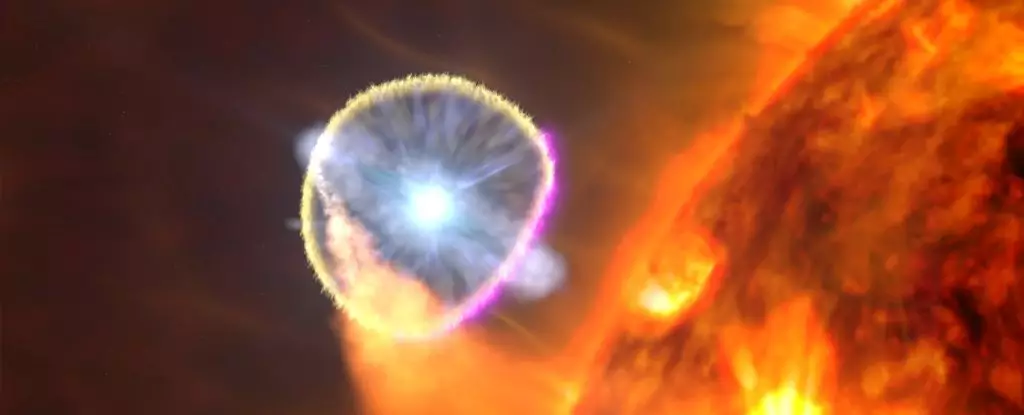In the vast expanse of the night sky, a star named T Coronae Borealis (T CrB) is preparing to put on a dazzling show for us mere spectators on Earth. Located more than 2,500 light-years away in the Corona Borealis constellation, T CrB is set to explode in a spectacular event known as a classical nova. This phenomenon, expected to occur within the next few months, will transform T CrB into one of the brightest objects in the night sky, providing astronomers with a golden opportunity to gather valuable data on this type of star explosion.
Classical novae, unlike the cataclysmic explosions of supernovae, are characterized by smaller bursts that leave the star relatively intact. This is the recurring fate of T CrB, which has undergone such eruptions once every 80 years for at least eight centuries. The unique nature of T CrB’s explosions can be attributed to its status as a binary star system, consisting of a white dwarf – the remnant collapsed core of a Sun-like star, and a puffy red giant companion.
White dwarfs, being incredibly dense and gravitationally intense objects, have the capacity to accumulate material from their binary companions, particularly hydrogen. As the hydrogen accumulates on the surface of the white dwarf, it becomes compressed due to gravitational forces. Eventually, the pressure and heat reach a critical point, triggering a runaway thermonuclear explosion that expels excess hydrogen into space in a breathtaking display of cosmic fireworks. For T CrB, this explosive process unfolds over an approximate 80-year cycle, leading up to its impending outburst.
In recent years, astronomers have observed telltale signs of an imminent explosion from T CrB, resembling the behavior exhibited prior to the 1946 eruption. This analysis indicates that the classical nova event could occur sooner than expected, possibly even before September 2024. With the celestial spectacle set to unfold in the sky, astronomers are closely monitoring the Corona Borealis region, brimming with constellations like Lyra, Hercules, and Boötes. The eruption is anticipated to be visible to the naked eye, gradually fading over the course of a week, providing ample time for stargazers to witness the event firsthand.
In light of the impending explosion of T CrB, citizen scientists are being encouraged to participate in data collection efforts. The more observers trained on T CrB, the greater the insights we can glean into its explosive behavior. In addition to amateur stargazers, a multitude of telescopes will be trained on the celestial event, spanning the entire electromagnetic spectrum from radio to X- and gamma radiation wavelengths. As we draw closer to the anticipated explosion, astrophysicists and astronomers are gearing up to unravel the mysteries of this recurrent nova event, characterized by its unpredictable and enigmatic nature.


Leave a Reply